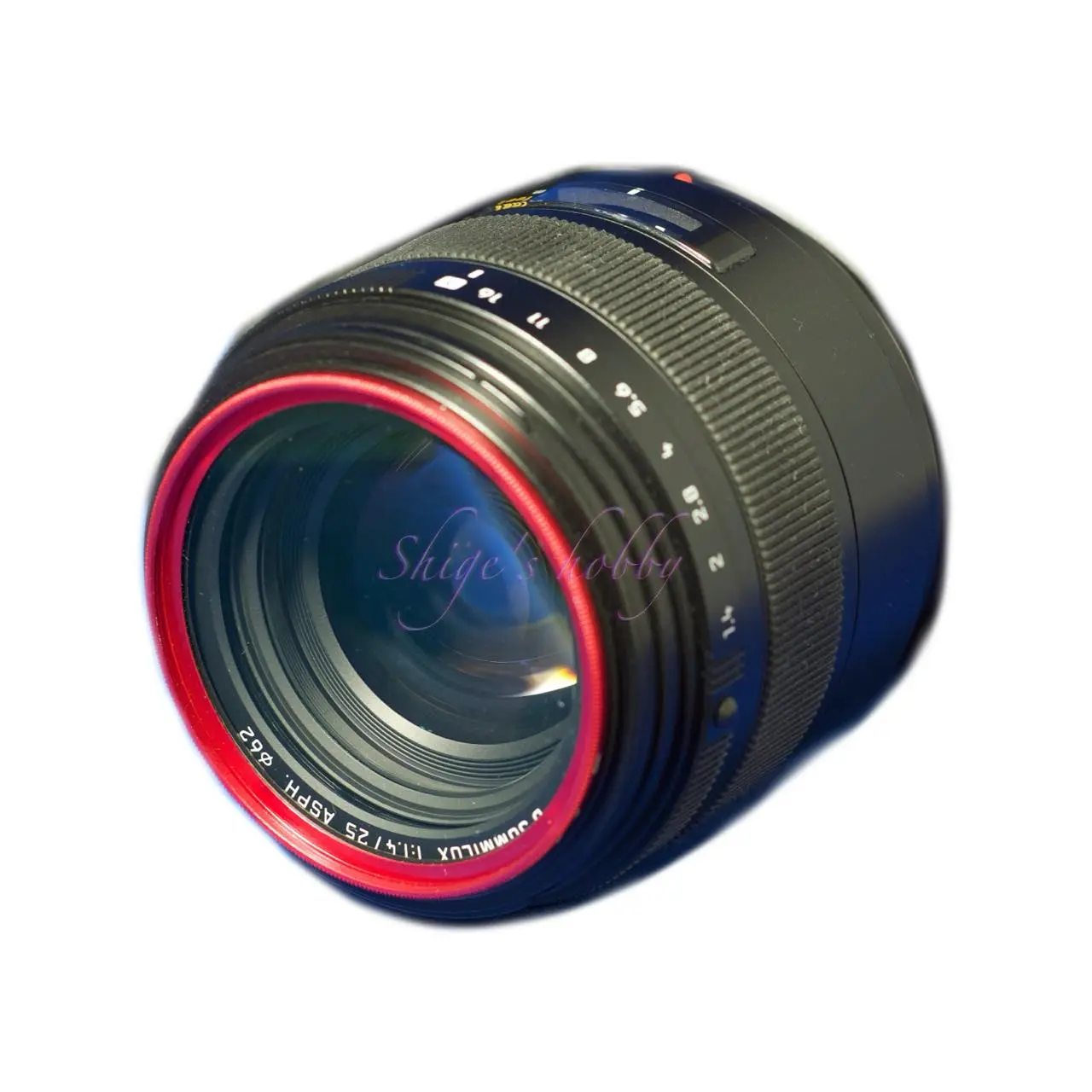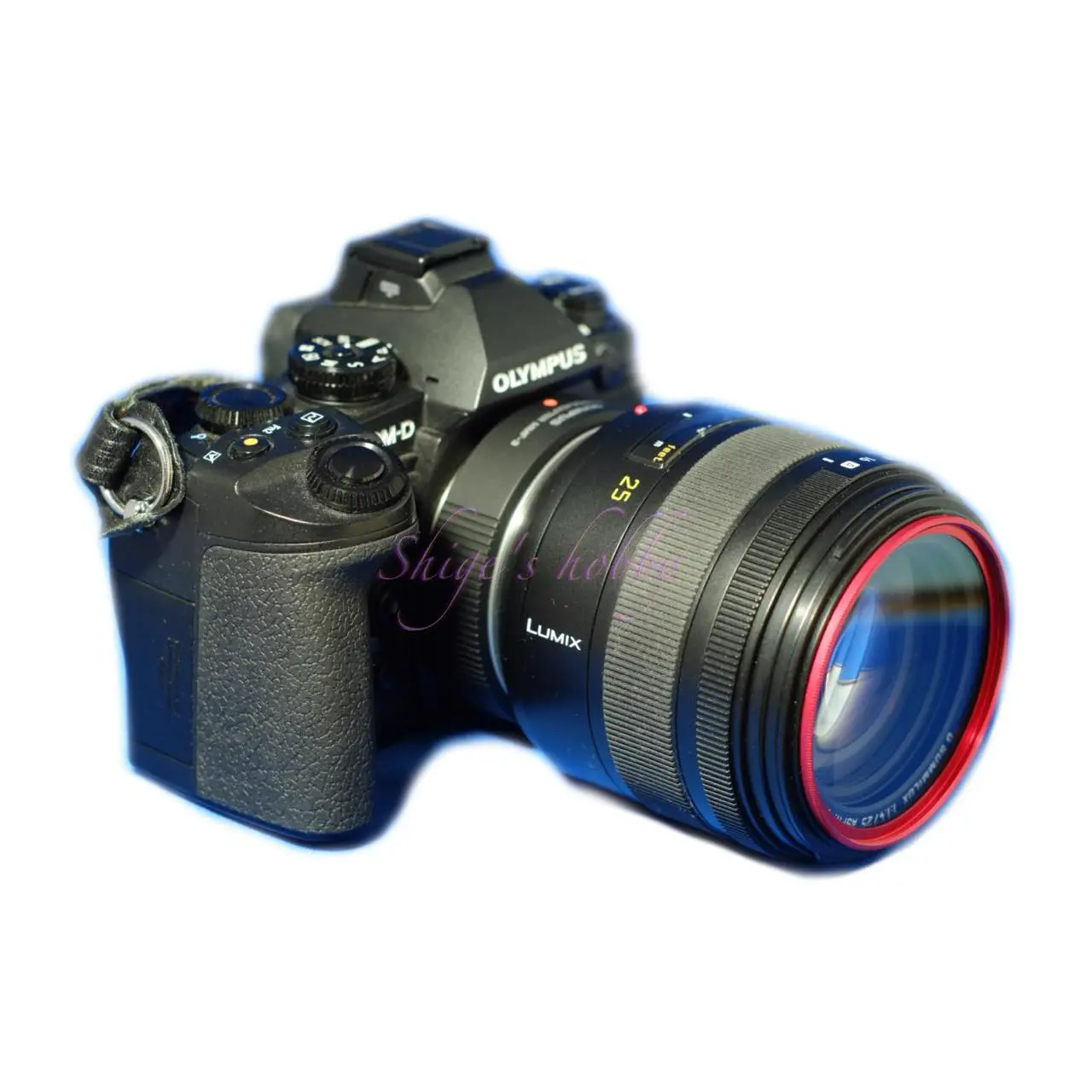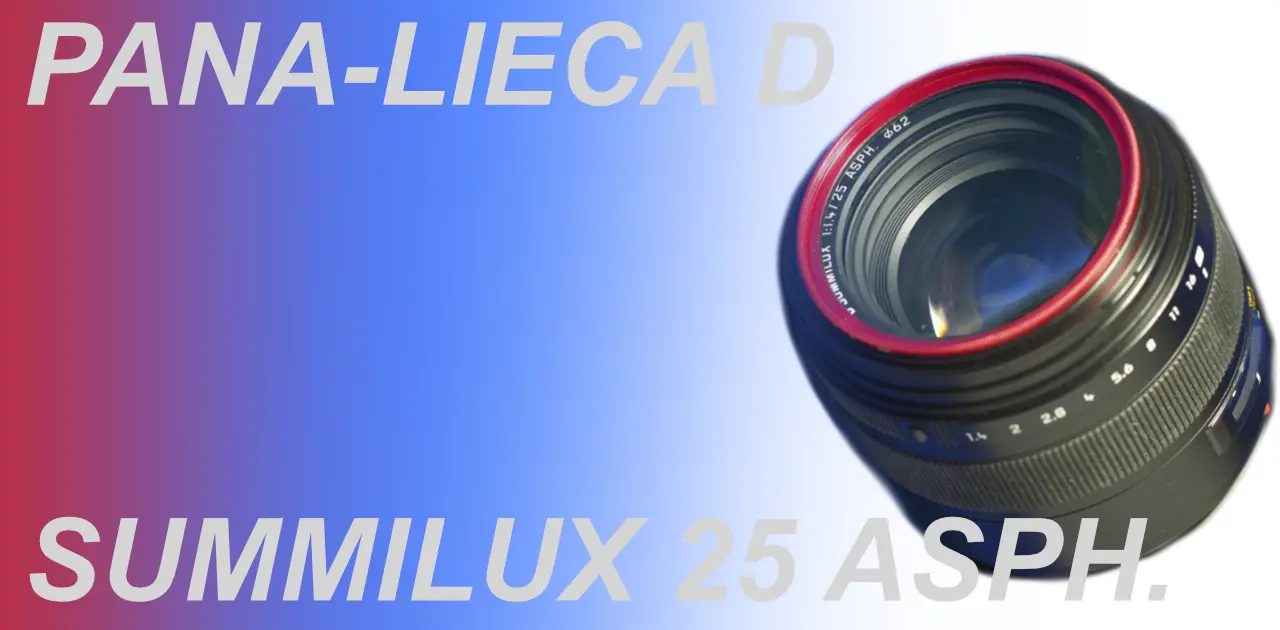Last updated on 2025-09-02
A review and sample photos of the Four Thirds mount PANASONIC LEICA D SUMMILUX 25mm F1.4 ASPH. (L-X025).
- Please see the disclaimer regarding advertising here.
- Italicized links in the text are advertisement links that take you to other sites.
Table of contents
Gallery
The camera used to take the example photos was the OLYMPUS OM-D E-M1.
Review


1.Overview
The PANASONIC LEICA D SUMMILUX 25mm F1.4 is a large-aperture standard lens released by Panasonic under the Leica D brand. It boasts a bright f/1.4 aperture, a 60.8mm lens barrel, and a total length of 52mm, with a list price of 120,000 yen.
The D brand refers to digital, and this is the first Leica-branded lens officially compatible with digital cameras. Manufactured by Panasonic, it is “produced in accordance with Leica Camera AG’s quality standards, using measuring equipment and a quality assurance system certified by Leica Camera AG.”
The lens is electrically driven, so while it is not particularly meaningful, it is equipped with a rangefinder scale covered by a plastic cover, and features an aperture and focus ring.
While the aperture ring is often located at the base of an SLR camera, the lens design resembles that of a rangefinder camera, with the aperture ring located at the tip of the lens. However, this aperture ring is operated by an electronic mechanism and is only effective on Panasonic Four Thirds camera bodies or Leica-branded Four Thirds camera bodies; it does not function on Olympus camera bodies. The fact that this aperture ring cannot be used on Olympus bodies feels a bit lacking.
The D-Summilux, a fast prime lens, does not have in-lens image stabilization.
The reasons for this are generally the same: the impact of camera shake is small at the wide-angle end of 25mm, the lens’s maximum aperture is fast, and in-lens image stabilization would result in a larger lens barrel.
Panasonic has released a total of four Leica D lenses, but the three zoom lenses other than this one have in-lens image stabilization.
2.Usability
When using the PANASONIC LEICA D SUMMILUX 25mm F1.4 with the OLYMPUS E-M1 (Micro Four Thirds camera), I found no major issues with the autofocus (AF) focusing speed or accuracy. The focus ring movement in manual focus (MF) is smooth, without the torque typical of AF lenses, and may feel a bit clunky for photographers accustomed to MF lenses. While it’s possible to interrupt AF with the focus ring, AF/MF switching is done from the body.
Perhaps due to the sensor size, the image quality is modern, with no erratic corners like the spherical Summilux-M 35mm. I didn’t notice any significant distortion in backlit situations.
When I purchased the OLYMPUS E-M1 Micro Four Thirds body, I was considering which lens to use as my standard lens. Used Four Thirds lenses were starting to drop in value, and even when purchased with the MMF-2 mount adapter, the D-Summilux 25mm was roughly the same price as Micro Four Thirds-specific lenses, so I decided to buy it.
When attached to the reasonably large OLYMPUS E-M1, it creates a decent balance between the body and camera.
For the Four Thirds system, this lens is the only prime lens with a 50mm focal length equivalent to 35mm, but it is larger than the older 50mm f/1.4 full-frame 35mm, and therefore falls outside the Four Thirds system’s philosophy of a compact camera system taking advantage of small sensors.
Perhaps reflecting on this, the LEICA DG SUMMILUX 25mm / f/1.4 ASPH. for Micro Four Thirds is 30% smaller in volume and half the weight. As a result, the rangefinder scale and aperture ring have been removed.
3.Summary
In conclusion , to sum up the PANASONIC LEICA D SUMMILUX 25mm F1.4, it is a lens that matches larger camera bodies and looks great with the Four Thirds camera LEICA DIGILUX 3.
The image quality is not as wild as the older SUMMILUX M 35mm, and is neat and modern.
Specifications, considerations, etc.
Leica’s Four Thirds camera system only has one camera body, the DIGILUX 3, released in November 2006, and four lenses: three zoom lenses, one prime lens, and one D SUMMILUX 25mm f/1.4.
Olympus’ Four Thirds system lens lineup, meanwhile, is dominated by zoom lenses, with only five prime lenses: two 35mm and 50mm macro lenses, a 25mm pancake lens for snapshots, an 8mm fisheye lens, and a 300mm telephoto lens.
Thus, the Four Thirds system was discontinued before the company could expand its prime lens lineup.
Leica’s Four Thirds system cameras were a product born from a collaboration with Panasonic, but the fact that it only lasted one body makes it seem like a foregone conclusion. The Four Thirds system itself was seen as a foregone conclusion, so Leica’s early decision to abandon it was probably the right one.
Leica’s Four Thirds system was released at aggressive prices for both bodies and lenses, but lens prices have recovered slightly from their lows around 2020 to 2024. Body prices continue to decline.
As for the camera bodies that support the lens mount, Panasonic’s last Four Thirds camera was the DMC-L10 in 2007. The company released its successor, the first Micro Four Thirds model, the DMC-G1, in October 2008, shifting to Micro Four Thirds ahead of Olympus.
Meanwhile, Olympus released its first Micro Four Thirds model, the E-P1, in July 2009, followed by the Four Thirds camera, the E-5, in October 2010. Olympus attempted to separate Micro Four Thirds for consumer cameras and Four Thirds for high-end professionals and enthusiasts, confusing avid Four Thirds users for several years, but they were unable to resist the trend and transitioned to Micro Four Thirds mirrorless cameras.
The future of Micro Four Thirds cameras is also uncertain. OM Digital Solutions, which was separated from Olympus, appears to have little capital and no development funds for new bodies or new sensors, so it is simply releasing a series of rehashed versions of existing cameras. Panasonic has also shifted to Leica’s L-mount for consumer cameras, and does not appear to be allocating resources to Micro Four Thirds.
Leica never adopted the Micro Four Thirds standard, and there was no news about an autofocus interchangeable-lens digital camera until the release of its own Leica T in November 2014. One reason for this is thought to be that the Leica M8 series of M-type digital cameras, released in 2006, sold reasonably well, so there was no need to focus on other camera systems.
| Focal length(mm) | D SUMMILUX 25 L-X025 | DG SUMMILUX 25(I) H-X025 | DG SUMMILUX 25(II) H-XA025 | Lumix G 25mm/ F1.7 H-H025 |
| Focal length | 25 | 25 | 25 | 25 |
| Max aperture | 1.4 | 1.4 | 1.4 | 1.7 |
| Min aperture | 16 | 16 | 16 | 22 |
| Leaf blade | 7 | 7 | 7 | 7 |
| Lens Construction | 10 elements in 9 groups | 9 elements in 7 groups | 9 elements in 7 groups | 8 elements in 7 groups |
| Min distance(m) | 0.38 | 0.3 | 0.3 | 0.25 |
| Lens length(mm) | 75 | 54.5 | 54.5 | 52 |
| Max diameter(mm) | 77.7 | 63 | 63 | 60.8 |
| Filter Size(mm) | 62 | 46 | 46 | 46 |
| Weight(g)(lens only) | 510 | 200 | 205 | 125 |
| Release date | Four Thirds | Micro Four Thirds | Micro Four Thirds | Micro Four Thirds |
| Edition Number | 2007.3.24 | 2011.7.22 | 2019.10.17 | 2015.10.23 |
| Price(Yen/No-tax) | 120,000 | 70,000 | 75,000 | 37,000 |
Reference links
- Panasonic公式ページ
- https://panasonic.jp/dc/c-db/products/L-X025.html
- https://panasonic.jp/dc/c-db/products/H-X025.html
- https://panasonic.jp/dc/c-db/products/H-XA025.html
- https://panasonic.jp/dc/products/H-H025.html
Affiliate links

Amazon Prime Sale
Update history
- 2025.8.24
- 2024.11.1



Be First to Comment